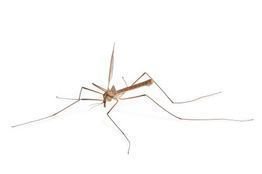
Hope for malaria patients: Cipla, DNDi get WHO pre-qualification for fixed dose combination of Artesunate-Mefloquine
Mumbai: Cipla along with the non-profit R&D organization, Drugs for Neglected Diseases initiative (DNDi), revealed that their fixed dose combination (FDC) of Artesunate (AS) and Mefloquine (MQ), ASMQ FDC, has received pre-qualification from the World Health Organization (WHO). ASMQ FDC is the first Artesunate-Mefloquine FDC to be pre-qualified by the WHO and is recommended for the treatment of malaria. The pre-qualification will make the malaria drug eligible to tenders that receive funding from international procurement agencies
'The prequalification announcement is recognition that ASMQ FDC meets WHO's high quality standards and we aim to make this treatment widely available throughout Asia', commented Dr Jaideep Gogtay, Medical Director, Cipla.
The ASMQ FDC is manufactured in Cipla's manufacturing facility in Patalganga, India, which is approved by WHO-Geneva, US FDA, MHRA-UK and various other regulatory bodies. This combination of AS and MQ is one of five artemisinin combination therapies (ACTs) currently recommended by the WHO for the treatment of uncomplicated P falciparum malaria, and is the first-line treatment in a number of South East Asian countries. ASMQ FDC was registered in India in 2011 and in Malaysia in early 2012.
ASMQ FDC was originally developed by DNDi and the Brazilian government-owned pharmaceutical company, Farmanguinhos/Fiocruz, and was registered in Brazil in 2008. A technology transfer between Farmanguinhos and Cipla was achieved in 2010 to facilitate the implementation of ASMQ FDC in Asia.
In addition to being easy-to-use (a single daily dose of one-to-two tablets over three days), ASMQ FDC will increase patient compliance and contribute to reducing the risk of resistance development, as it ensures both drugs are taken together and in correct proportions (four dosage forms based on age/weight dosing). In 2009, a study in Myanmar comparing the effectiveness of the four fixed-dose ACTs, then recommended by WHO, showed that ASMQ FDC had the highest cure rate and the lowest rate of gametocyte carriage, providing the greatest post-treatment suppression of recurrent P falciparum malaria and the most effective suppression of blood-stage P vivax malaria.




